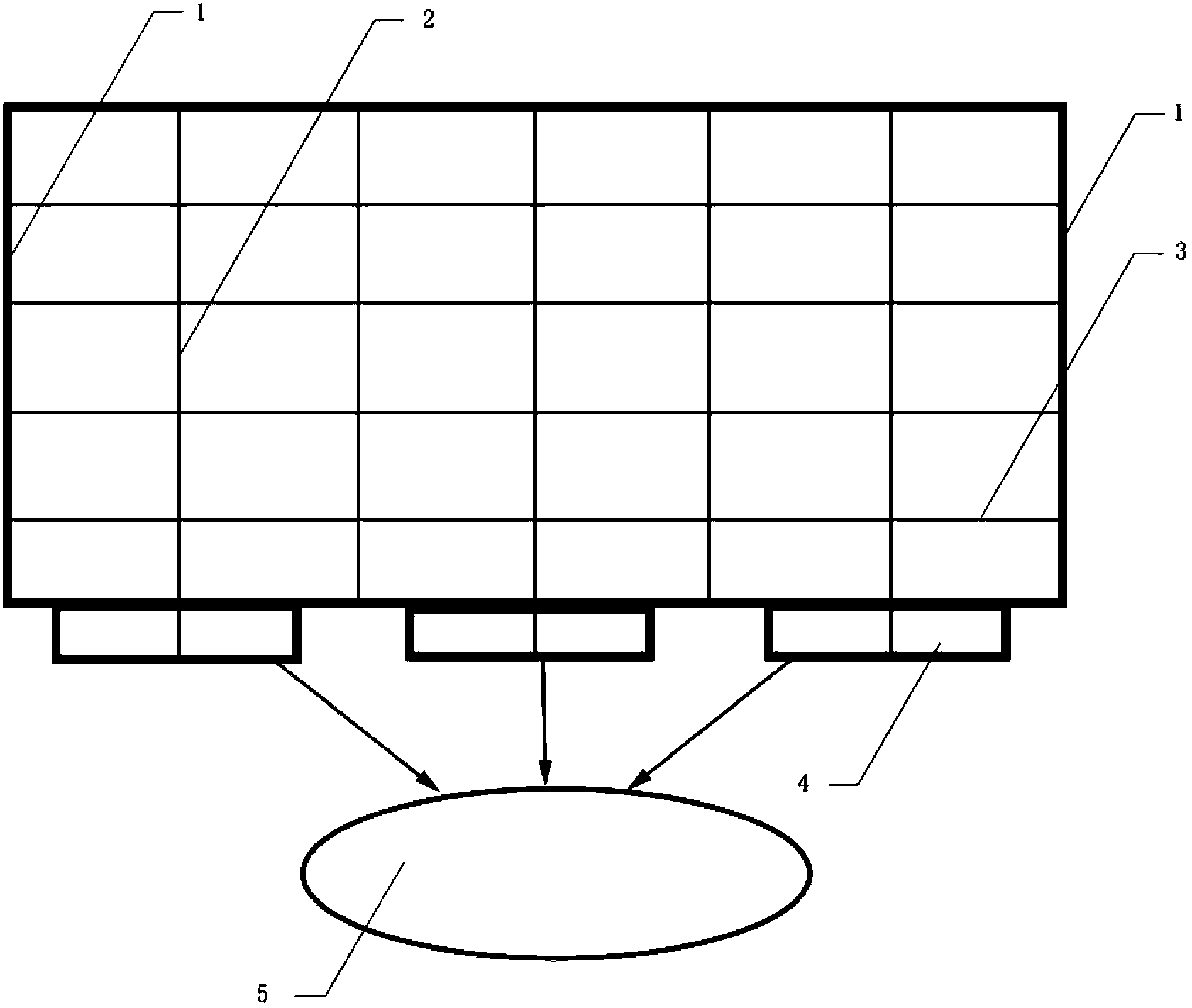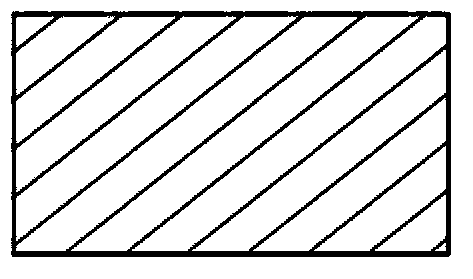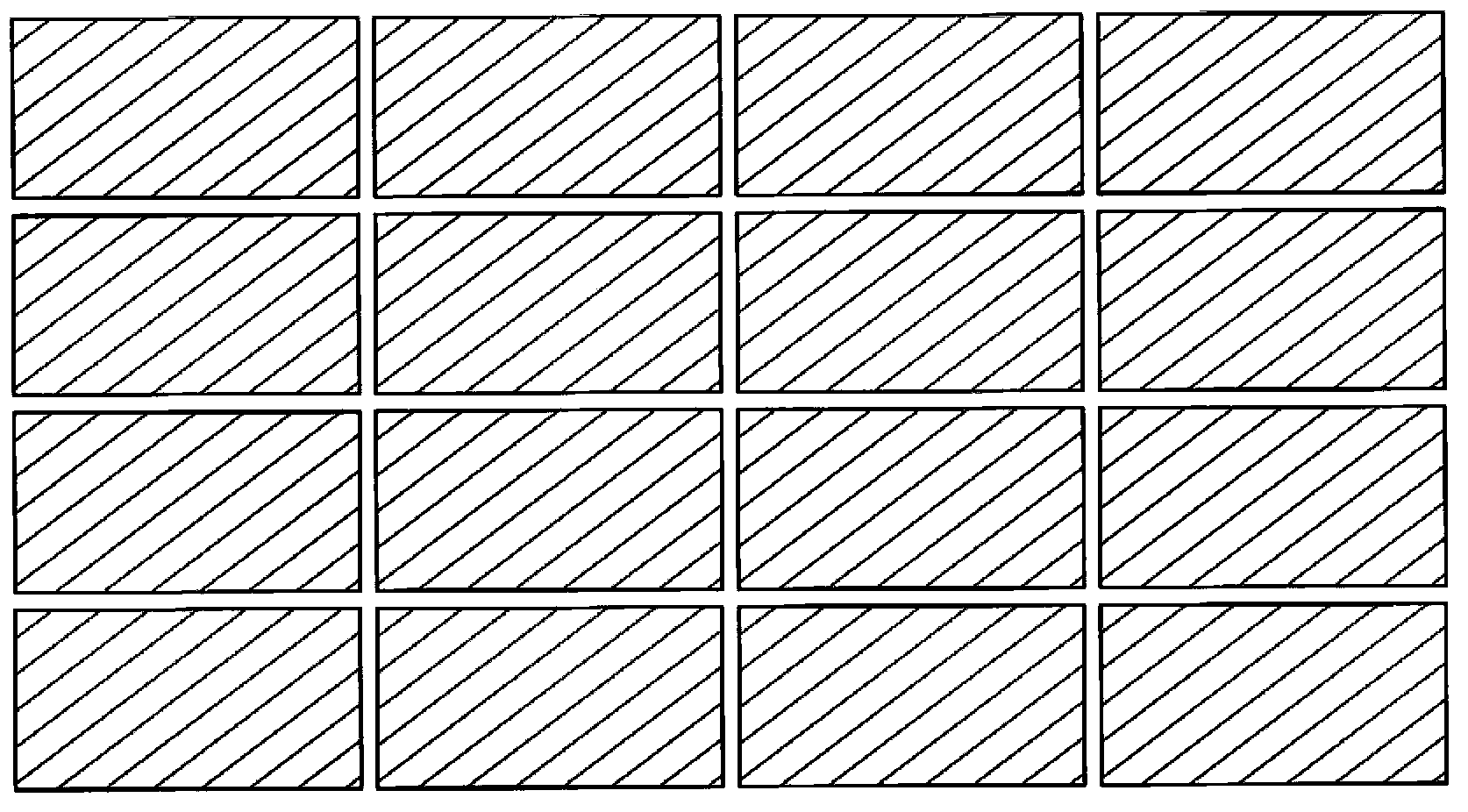Method for prevention and control of non-point source pollution and cyclic utilization of resources of tea garden and system thereof
A non-point source pollution, tea garden technology, applied in chemical instruments and methods, applications, biological water/sewage treatment, etc., can solve the problems of recycling, pollution of tea garden resources, etc., to achieve the effect of simple process, clear positioning, and reduction of fertilizer input
- Summary
- Abstract
- Description
- Claims
- Application Information
AI Technical Summary
Problems solved by technology
Method used
Image
Examples
Embodiment 1
[0029] Choose a steep slope of 15° as the site for planting tea gardens, and set up terraced fields on the steep slope. The horizontal distance between the longitudinal ditches is 1m, horizontal ditches are arranged perpendicular to the direction of the vertical ditches on the terraces, the vertical distance between two adjacent horizontal ditches is 2.5m, and main ditches are set at the boundaries around the steep slopes. The longitudinal ditch is connected with the horizontal main ditch, and the horizontal ditch is connected with the vertical main ditch; the longitudinal ditch is 45cm deep, 35cm wide, the horizontal ditch is 35cm deep, and 25m wide, the main ditch is 55cm deep, 55cm wide, and the vertical ditch is 10cm deeper than the horizontal ditch. After this setting, the nutrient loss rate is reduced by 2%, the runoff production is reduced by 6%, and the TN emission from farmland is reduced by 6%.
Embodiment 2
[0031] Choose a steep slope of 30° as the site for planting tea gardens, and set up terraced fields on the steep slope. The horizontal distance between the longitudinal ditches is 2.5m, horizontal ditches are arranged perpendicular to the direction of the longitudinal ditches on the terraces, the vertical distance between two adjacent horizontal ditches is 4m, and main ditches are set at the boundaries around the steep slopes. The longitudinal ditch is connected with the horizontal main ditch, and the horizontal ditch is connected with the longitudinal main ditch; the longitudinal ditch is 60cm deep, 55cm wide, the horizontal ditch is 50cm deep, and 35cm wide, the main ditch is 90cm deep, 80cm wide, and the vertical ditch is 10cm deeper than the horizontal ditch. After this setting, the nutrient loss rate is reduced by 2%, the runoff production is reduced by 6%, and the TN emission from farmland is reduced by 8%.
Embodiment 3
[0033] Choose a steep slope of 18° as the site for planting tea gardens, and set up terraced fields on the steep slope. The horizontal distance between the longitudinal ditches is 2.5m, horizontal ditches are arranged perpendicular to the direction of the longitudinal ditches on the terraces, the vertical distance between two adjacent horizontal ditches is 4m, and main ditches are set at the boundaries around the steep slopes. The longitudinal ditch is connected with the horizontal main ditch, and the horizontal ditch is connected with the vertical main ditch; the longitudinal ditch is 65cm deep, 55cm wide, the horizontal ditch is 58cm deep, and 38cm wide, the main ditch is 92cm deep, 82cm wide, and the vertical ditch is 12cm deeper than the horizontal ditch. This setting reduces the nutrient loss rate (the ratio of loss to fertilizer and organic fertilizer input) in tea gardens by 3%, reduces runoff generation by 8%, and reduces TN emissions from fields by 10%.
PUM
 Login to View More
Login to View More Abstract
Description
Claims
Application Information
 Login to View More
Login to View More - R&D
- Intellectual Property
- Life Sciences
- Materials
- Tech Scout
- Unparalleled Data Quality
- Higher Quality Content
- 60% Fewer Hallucinations
Browse by: Latest US Patents, China's latest patents, Technical Efficacy Thesaurus, Application Domain, Technology Topic, Popular Technical Reports.
© 2025 PatSnap. All rights reserved.Legal|Privacy policy|Modern Slavery Act Transparency Statement|Sitemap|About US| Contact US: help@patsnap.com



